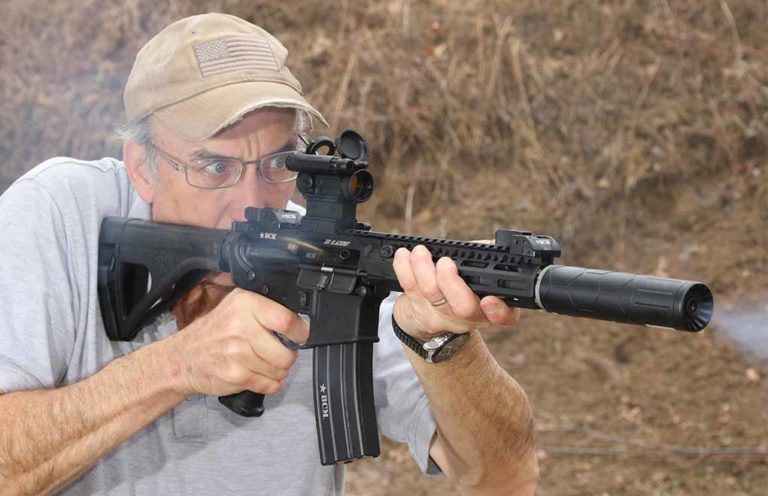
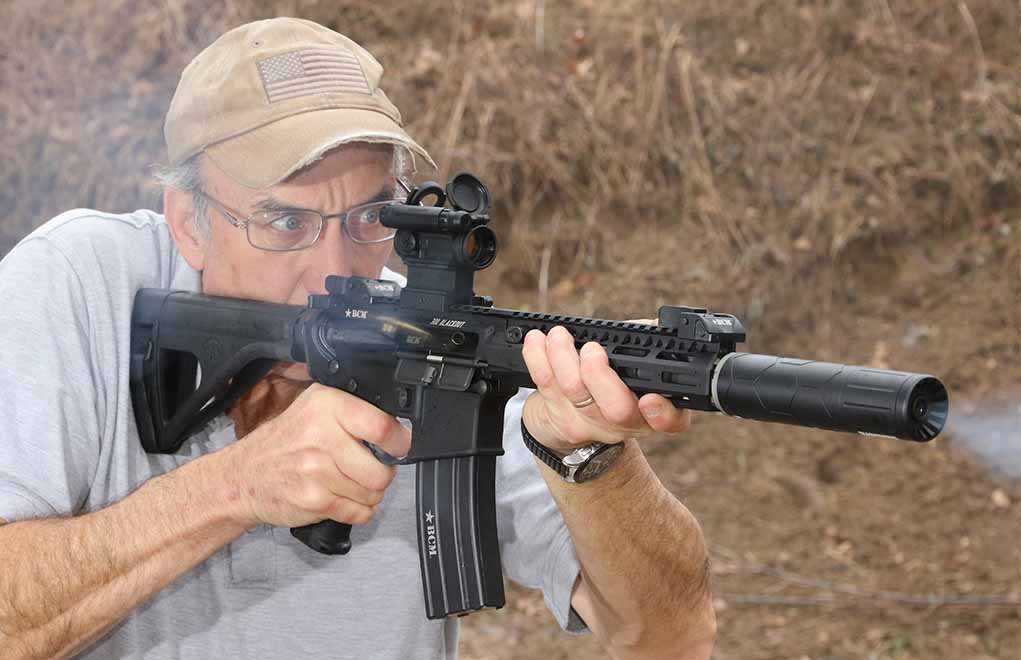
Both kick out .30-caliber bullets, are pleasant shooters and can be kept quiet as a church mouse, so is there really any difference between the .300 Blackout and its predecessor the .300 Whisper?
Development Of The .300 Whisper
The beginning of the subsonic revolution in ARs came to us from J.D. Jones. To call him a prolific inventor is to use “prolific” lightly.
He has always endeavored to expand the borders of firearms performance, from the smallest to the largest. The .300 Whisper was his AR-15 cartridge for quiet shooting. The idea was simple: take a .223 case, expand the neck to hold a .30-caliber bullet, shorten it so the neck would hold the bullet at the proper place, and fit it all into an AR-15 magazine. A shortcut would be to take the .221 Fireball case, and neck it out to .30. The Fireball itself was essentially just a shortened .223, meant for use in single-shot bolt-action pistols, primarily the Remington XP100. It was the varminting answer to “How do I use a handgun to shoot varmints?”
J.D. was aided in this work by the continuing efforts of rifle target shooters. When I began shooting in the early 1970s, the bullets available for .30 rifles for target shooting were not many. You could find a 168-grain match boat tail. You could, if you were lucky and persistent, score a supply of 175-grain FMJ-BT bullets, which were used for decades before by the military.
Heavier than that, there were only hunting bullets. There were 180-grain soft points, and 220 FMJ or soft-point bullets, but they were round-nosed, and meant for use on large game. You’d have the 220s loaded in your .30-06 or .300 H&H, for use on bear, moose or elk on a hunt in Alaska or Canada.
But long-range target shooters wanted more. For long-distance shooting, the competitor has two problems: distance and wind. Distance is easy, as the targets are a known distance away, and that distance does not change. Wind, however, does.

If we assume a bullet design has the same ogive, and boat tail, then the only way to change weight is to make it longer. This is good, because a longer and heavier bullet will have a larger ballistic coefficient, or BC. BC is a measure of a bullet’s drag, compared to a theoretical object that is a standard. The higher the BC, the more efficiently a bullet passes through the air.
We’re getting a bit involved here, so stick with me. For any given cartridge, operating at a certain pressure, adding weight to a bullet means you have less velocity. You simply cannot push a (to use as an example) 168-grain .30 bullet and a 240-grain .30 bullet at the same speed. The 240, in any given cartridge, has to be going slower, simply because the pressure limit of the cartridge determines the maximum amount of energy you can use to push the bullet.
Target shooters don’t care. A bullet with a higher BC loses less velocity as it goes downrange, so the net is not to lose as much when it reaches to the target. The real boon for target shooters is that a higher-BC bullet is less affected by wind.
Get On Target With The AR:
- Go Small With These 8 Economical AR Pistol Options
- 8 Budget AR-15 Options: More Bang For The Buck
- AR-10 vs. AR-15: How Stoner’s Rifles Stack Up
- How It Works:The AR-15 Upper
A high-BC bullet is said to have less wind drift. So even with a lower starting velocity, the 240-grain .30 bullet will drift less than a 168-grain bullet in the same wind. In target shooting, riflemen must estimate the effect of wind drift in real time and adjust for it. The smaller the amount they have to adjust, the less effect an error, or change in wind, will have on their scores. They don’t care about trajectory differences, because the targets are always the same distances. Well, they were for NRA High Power. All that changed with the development of the Precision Rifle Series, where targets are at odd and differing distances. But we risk wandering, so back to it.
OK, so from the early 1970s, to the late 1980s, the heaviest .30 bullets that could be had went from 168 grains to 220 grains. And those were pointed, match bullets.

J.D. Jones was first, and he got his invention type-certified by CIP. So, J.D. designed the cartridge, modified brass, trademarked it as the .300 Whisper, and began offering rifles and ammo. His work on modifying brass was a continual headache. The internal thickness of .223 and 5.56 brass is not a rigid specification once you get down past the case neck. So, he found that he had to ream some lots and brands of brass more than others. The reaming was required because the new neck was formed in the middle of the body of the original case. Differing wall thicknesses meant some rounds would not chamber unless the formed case was reamed.
When the volume of ammunition produced required by customer orders got to be great enough, he simply went to an ammo maker, had the company get his ammunition type-certified by CIP, and then could have brass made.
The ammo maker was Hornady, and I had the opportunity to be one of the first testers of factory ammo in a J.D. Jones-built upper for the AR-15. This was in 2011, and life was good.
.300 Blackout Hits The Scene
Then, controversy erupted. A new ammo maker burst onto the scene, in the form of the .300 Blackout. Developed by Advanced Armament Company, or AAC, the Blackout was brought into being because of AAC’s military customers. Those customers (or a certain subgroup of them) wanted a subsonic, heavy bullet, autoloading cartridge that would work with in their platform. That platform was the M4, so the new cartridge had to fit into AR-15 magazines, and work with AR-15 bolts.
Remember earlier, when we discussed pressure testing, and certification agencies? AAC could not use CIP loading and certification, because the parent company of AAC, Remington, is a SAAMI member. So, the engineers at AAC had to start essentially from scratch, to design, refine, test and offer for certification, a new .30 cartridge to fit the bill.

AAC makes rifles to go along with the cartridge it developed. And they are clearly marked, which is a very good thing. The end result was that the .300 Blackout and the .300 Whisper, for almost all concerned, were interchangeable.
The .300 Blackout was type-certified by SAAMI, and Remington and everyone else began making ammo. The controversy? Some people think the design team at AAC just made a few minor changes in the dimensions to the .300 Whisper, and then handed it off to the acceptance committee. Well, they didn’t. I’ve talked to people involved, and they did their due diligence, and worked it up properly.
The problem is, the design specifications are so narrowly defined, it is hard to be different. As an exercise in cartridge design, I dare you to design a cartridge that does what the Whisper and Blackout do, and doesn’t come so close to either that it would seem to be a duplication.
Or, assuming you could find someone who didn’t already know about either, and who knew enough about cartridges, pose them this problem: a .30 bullet, as heavy as possible, in a parent .223 or .221 Fireball case, that has to fit an AR magazine, feed reliably and use an unmodified bolt. They will, just as you had, come up with a clone of the Whisper and Blackout.
The positives of the .300 Blackout and Whisper are obvious.

The .300 Blackout and Whisper can be loaded with many different bullets, but you have to be careful with overall length. They have to fit the magazine, regardless of bullet weight. What They Have To Offer
You can shoot subsonic ammo, and that makes the rifle or pistol very quiet. A subsonic 240-grain bullet is going to be going, at most, at 1,050 fps. That puts it squarely in the realm of a .45 ACP+P load. However, it does it with a carbine or pistol that holds 30-round magazines, and can be teamed with a red-dot or magnifying optic. There are even .300 Blackout and Whisper loads that offer expanding bullets. If you do not have one of the expanding bullets in your .300, do not fear. I tested the Hornady subsonic .300 Whisper load when this was all new. They use a 208-grain A-Max bullet for that load. It clocks in from just under supersonic out of a carbine-length barrel, to just over 1,000 fps from a stubby eight-inch pistol or SBR tube.
Testing in ballistic gelatin uncovered some very interesting results. Each shot would travel about 10 inches into a gel block, and then the yawing bullet would veer to the top, bottom or sides of the block, and exit. In order to recover bullets, I had to wrap the block on all sides with Kevlar vests. You might not like that, and want deeper penetration, but I have to think that a 208-grain, .308 bullet, going sideways, is going to get a lot of the job done, if not all of it.

There are now expanding bullets for the .300s, but for many applications a non-expanding one works just fine. All the heavyweights, fired at subsonic velocities, will do much the same. I’m not sure you can make a barrel with a twist rate fast enough to keep them point-on in ballistic gel. Or living targets.
When fed subsonic ammo, the .300 Blackout and Whisper can use a compact and lightweight suppressor, to make them even quieter. Jumping up to supersonic loads is too much stress for the lighter, more-compact suppressors, so do be careful.

Here you can see the difference bullet weight makes. These two dummy cartridges show the distance a heavy bullet protrudes back into the case. This takes up case capacity, but since we are looking for subsonic performance with heavyweight bullets, reduced case capacity is a good thing. If you want a different performance envelope, you can switch to .300 Blackout and Whisper loads using 110- to 125-grain bullets, which will be delivered as much as 2,300 fps out of a 16-inch barrel. For deer hunters, this is perfect. A modern, expanding, .30 bullet of 110 to 125 grains, out of one of the .300s is soft in recoil, not overly noisy, and more than enough to bring down a whitetail. If your DNR permits deer hunting with suppressors, then you have your answer: A lightweight AR, in .300 Blackout or Whisper, with a suppressor is just the ticket for getting new shooters introduced to hunting.
It won’t hurt their shoulders, it won’t hurt their ears, and it will certainly bring down a whitetail.
In either loading, the .300 Blackout and Whisper do not use much powder per shot, so if you reload, powder costs are about as small as they get. This is offset by the greater cost of the bullets, as a 240-grain .308 jacketed bullet is going to cost you more than a 230-grain lead bullet for a .45 ACP. (The ballistic performance similarity.)
Editor's Note: This article is an excerpt from Cartridges of the AR-15, available at GunDigestStore.com.

Next Step: Get your FREE Printable Target Pack
Enhance your shooting precision with our 62 MOA Targets, perfect for rifles and handguns. Crafted in collaboration with Storm Tactical for accuracy and versatility.
Subscribe to the Gun Digest email newsletter and get your downloadable target pack sent straight to your inbox. Stay updated with the latest firearms info in the industry.

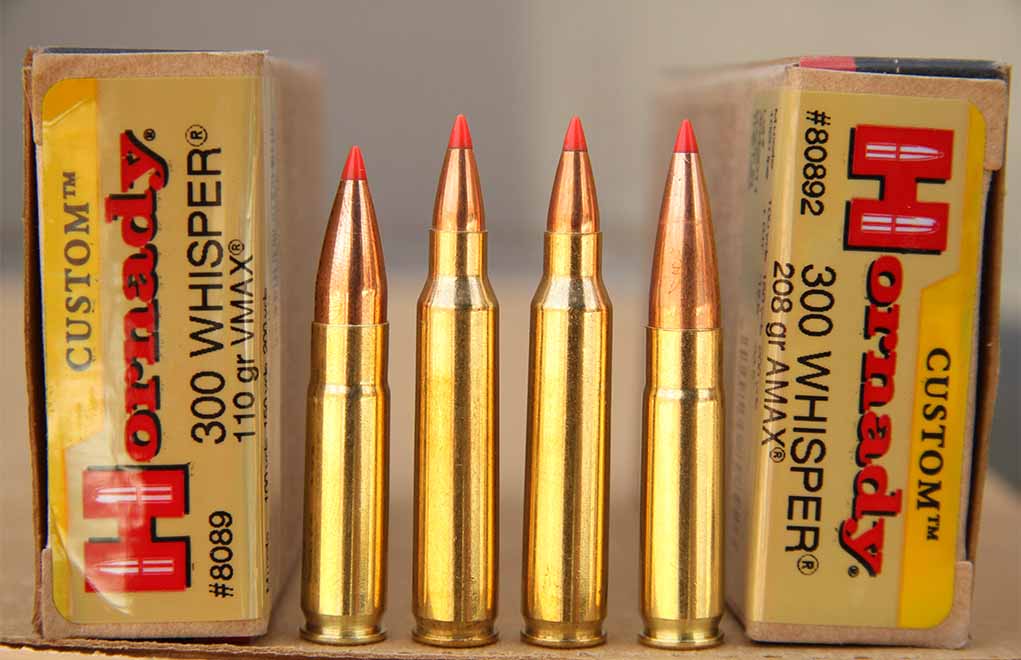
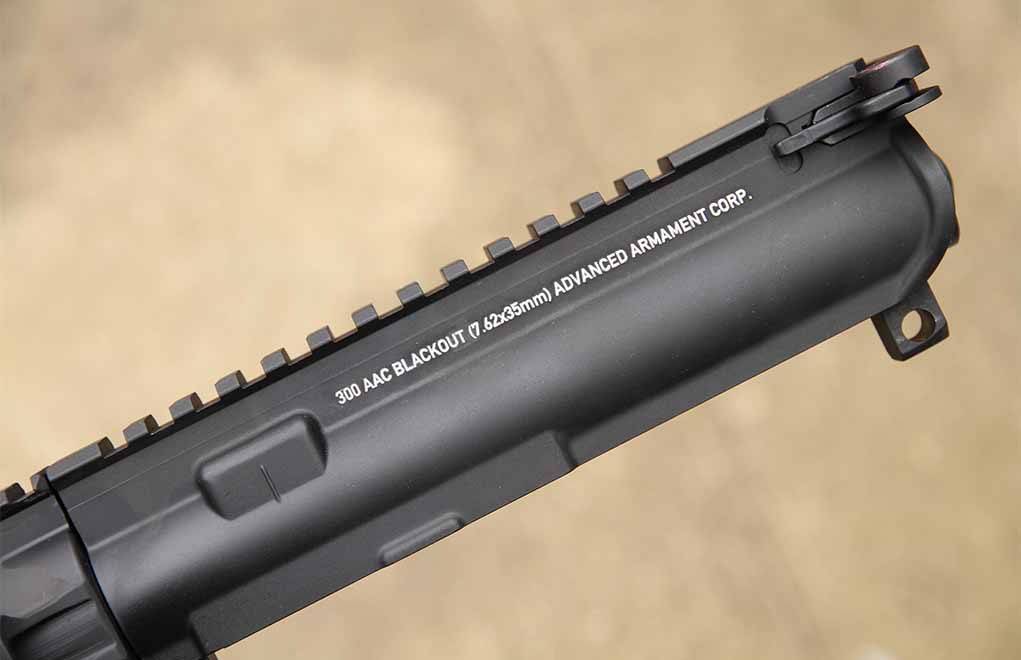

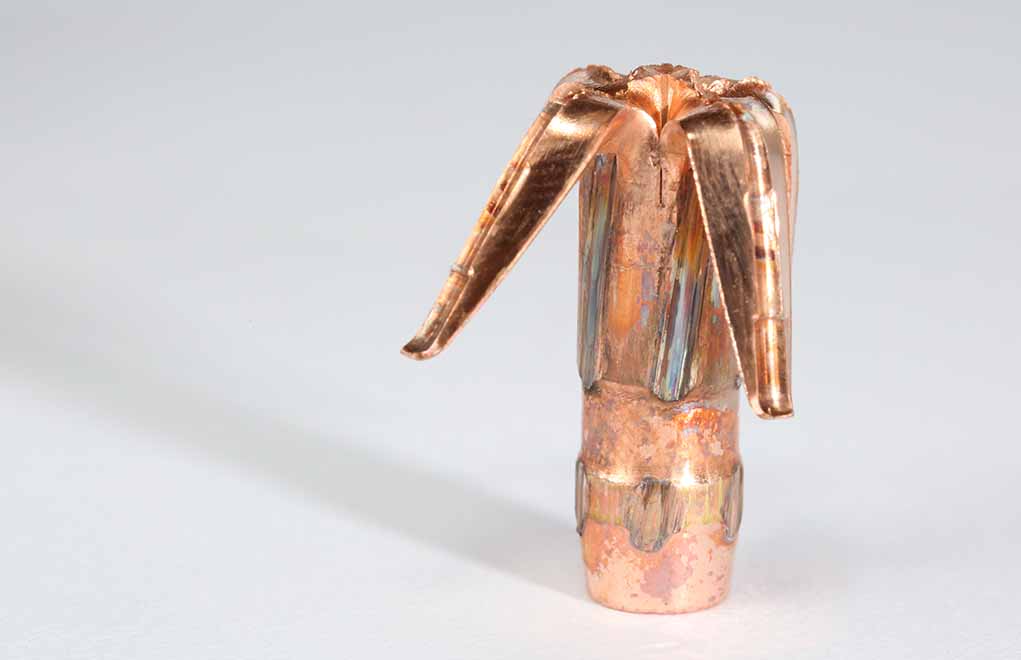
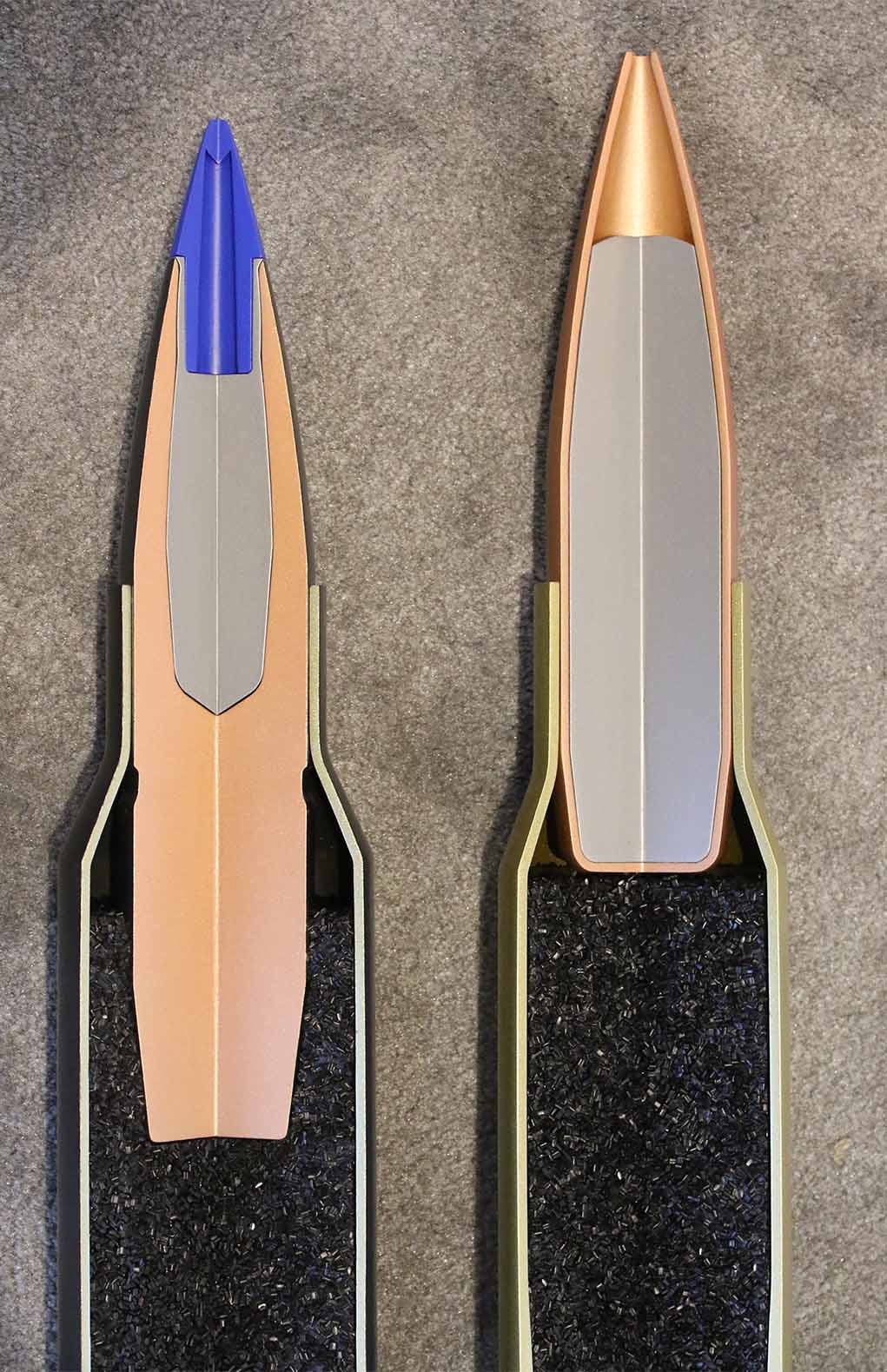

![Best Concealed Carry Guns In 2025 [Field Tested] Wilson Combat EDC X9S 1](https://gundigest.com/wp-content/uploads/Wilson-Combat-EDC-X9S-1-324x160.jpg)


![Best 9mm Carbine: Affordable PCCs [Tested] Ruger Carbine Shooting](https://gundigest.com/wp-content/uploads/Ruger-Carbine-Shooting-100x70.jpg)
![Best AR-15: Top Options Available Today [Field Tested] Harrington and Richardson PSA XM177E2 feature](https://gundigest.com/wp-content/uploads/Harrington-and-Richardson-PSA-XM177E2-feature-100x70.jpg)

Would like to see a comparison to the .300 Ham’r.